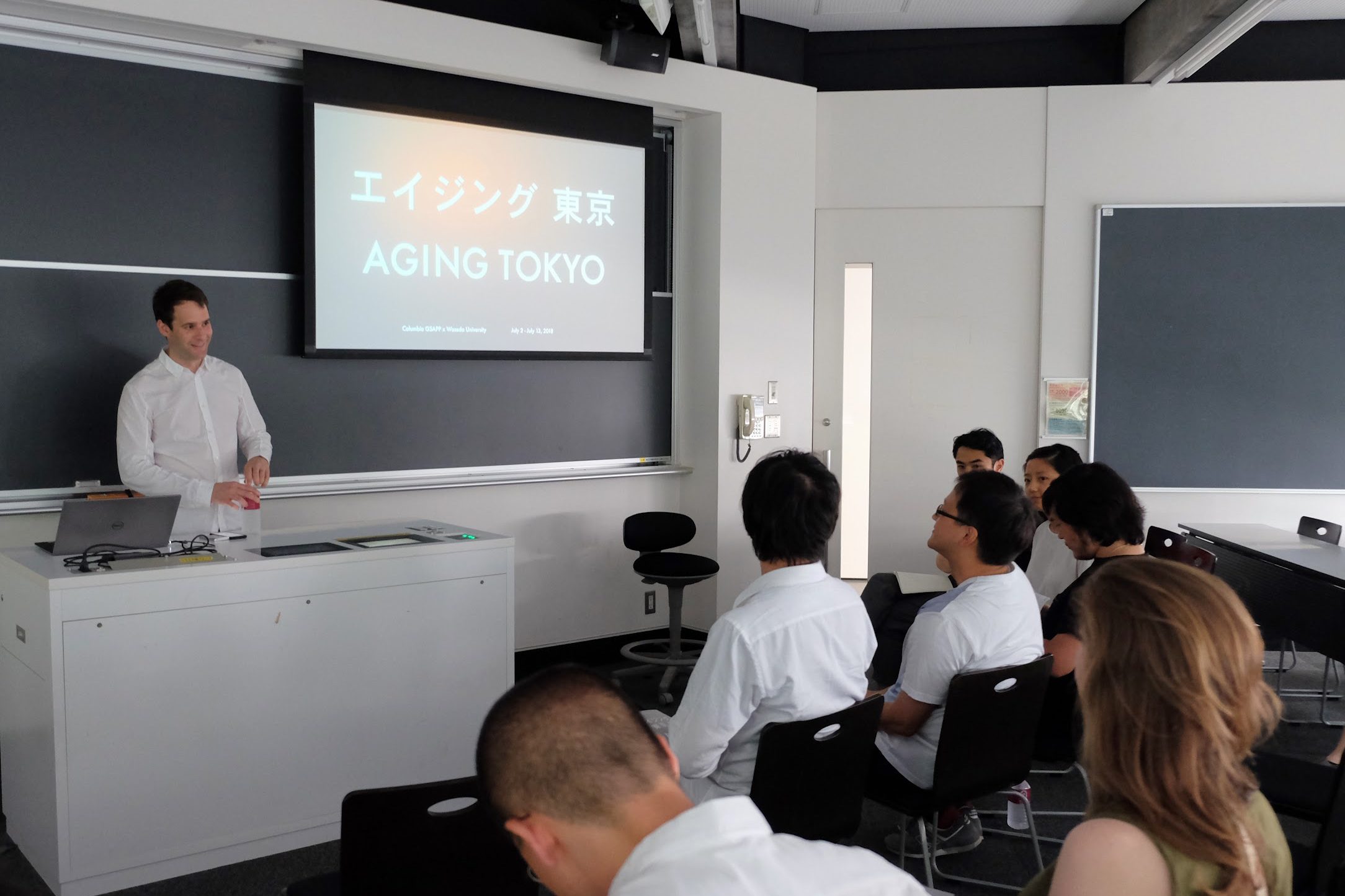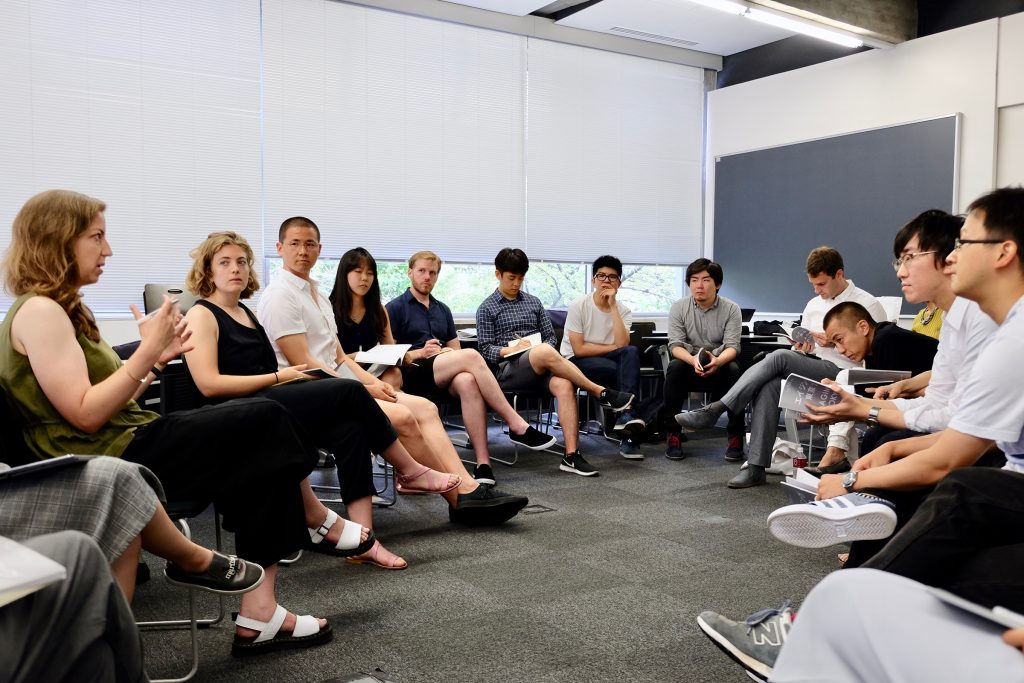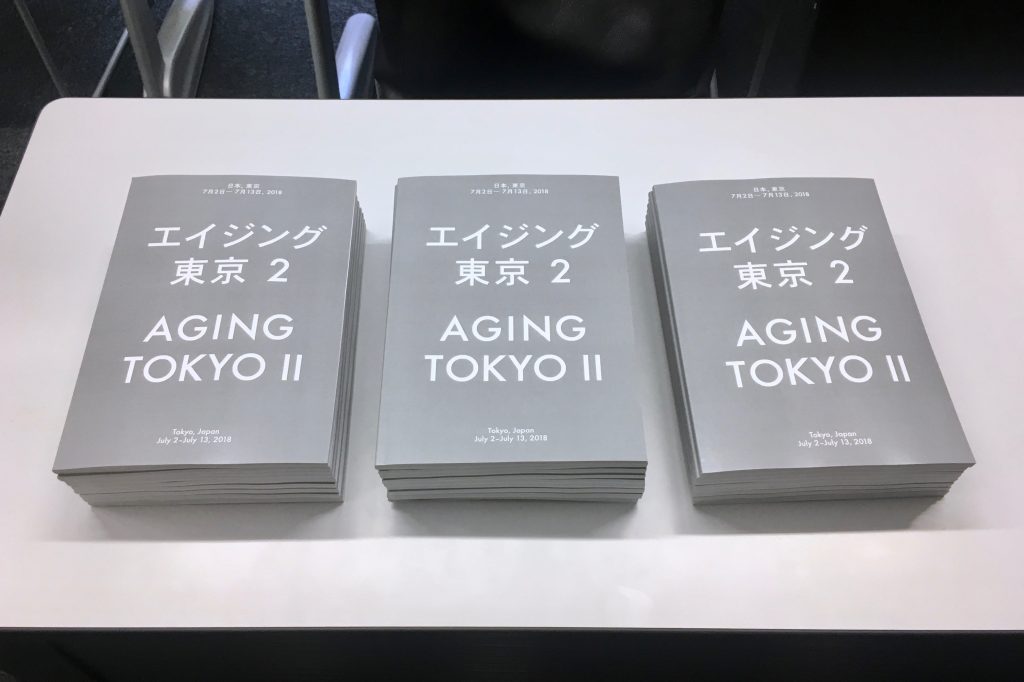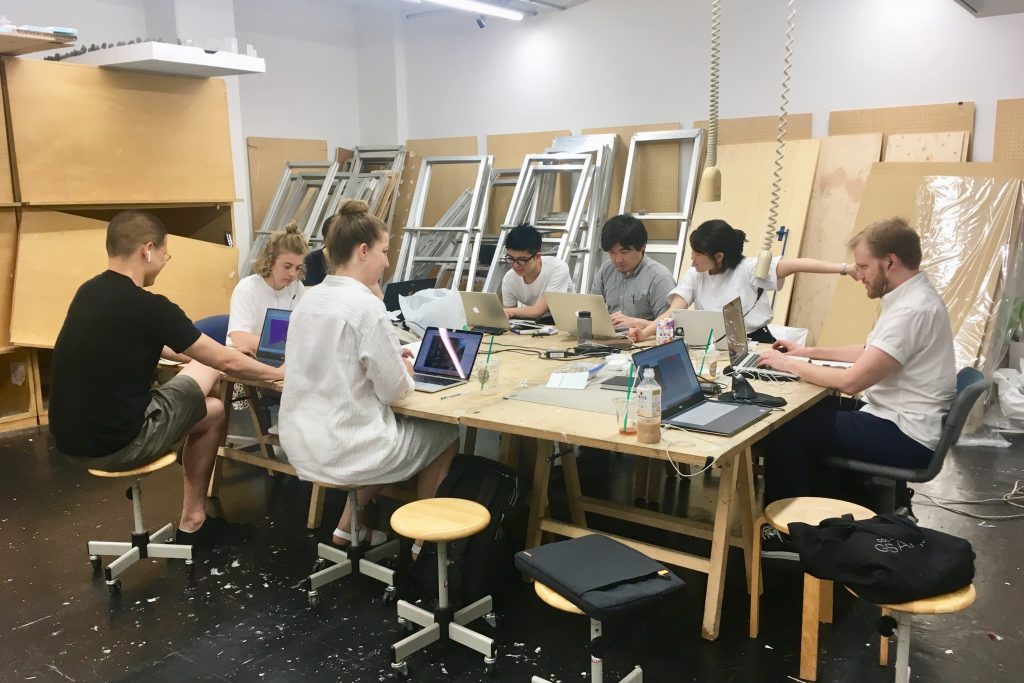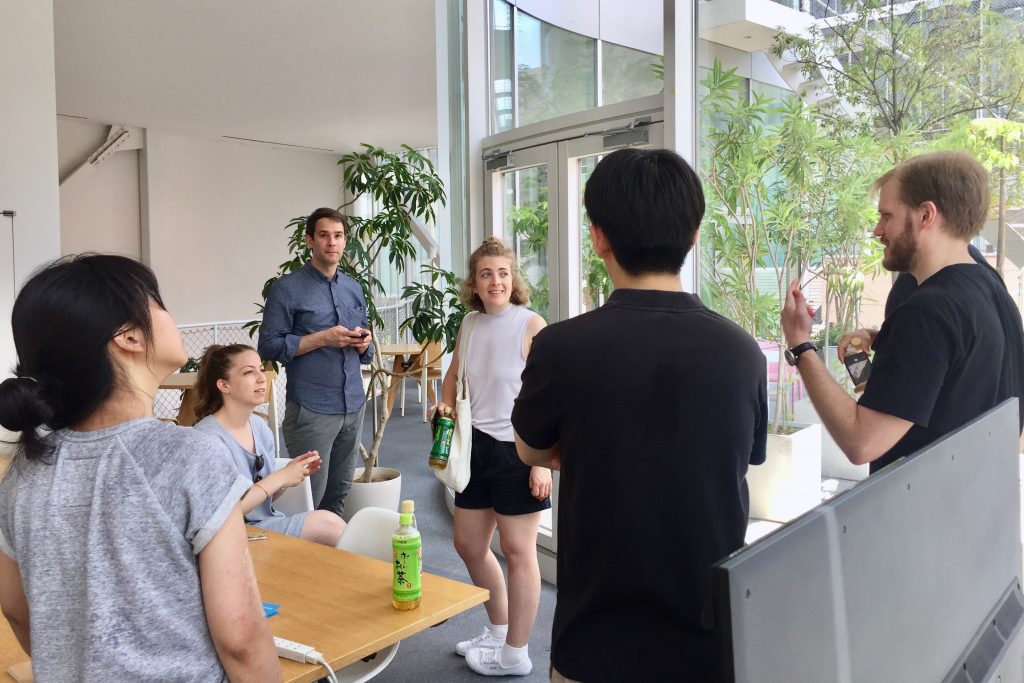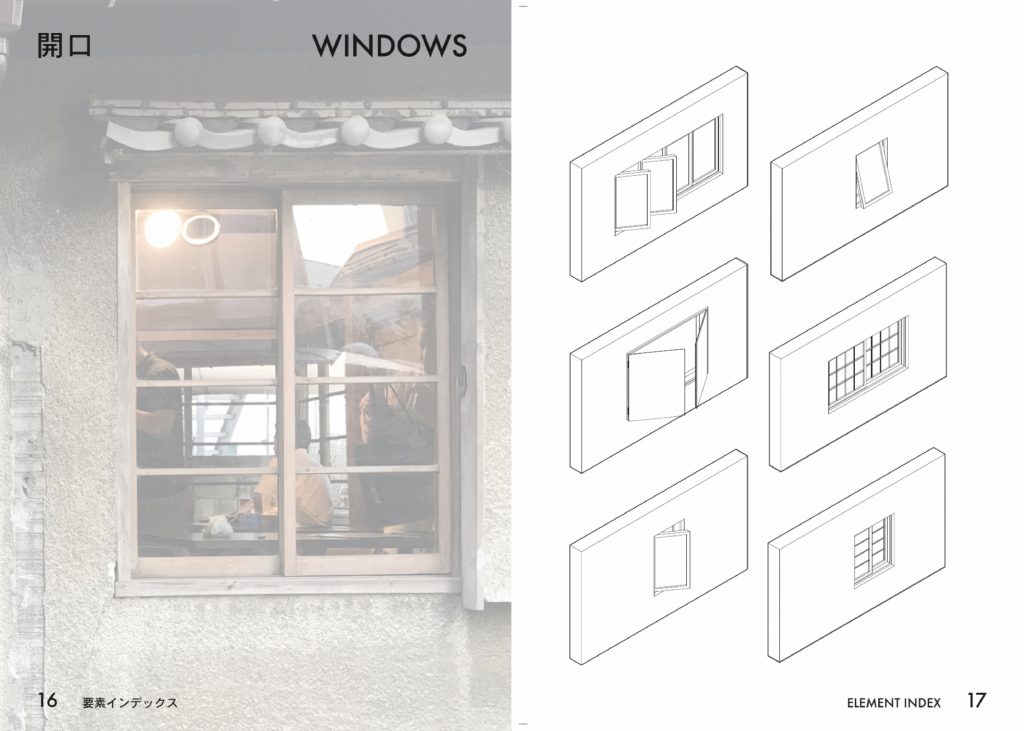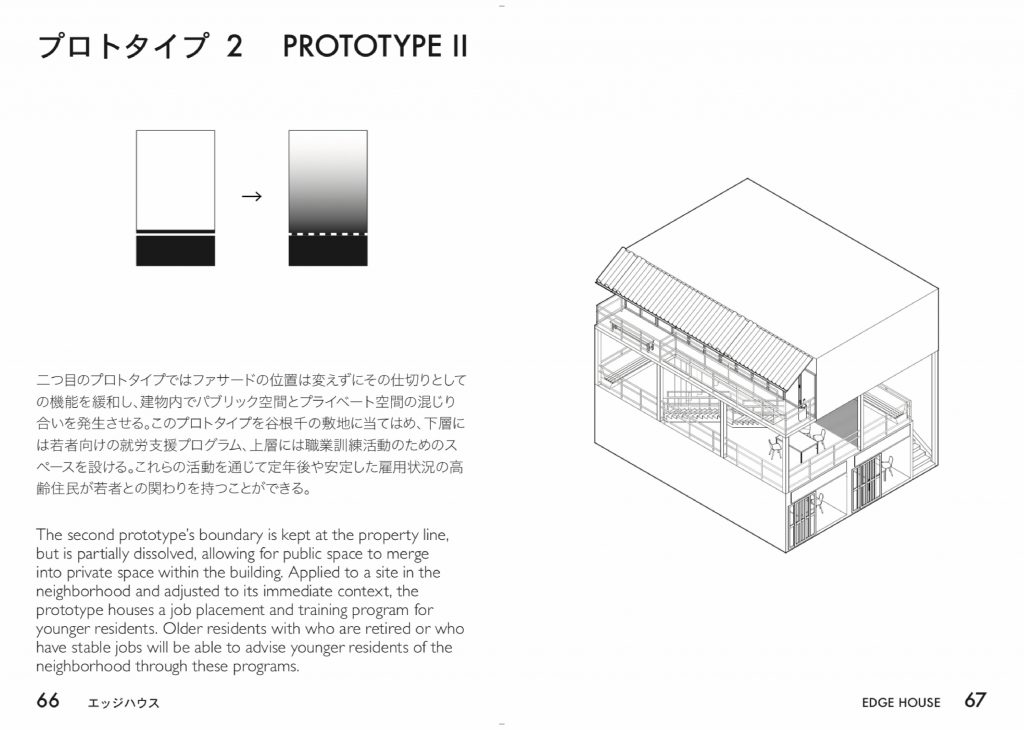昨年に引き続き、本年も7月上旬の2週間でAGING TOKYOと題したワークショップをコロンビア大学建築学科(GSAPP)のAdam Frampton助教授と曽野祐子率いる学生らと共同で行った。昨年は高齢化が東京の街、建築や住まいにどのような影響を及ぼすかを調査して最終的には冊子にまとめた。今年はこの調査結果を踏まえて建築的な提案を試みた。コロンビア大学の学生と東京の様々な街を歩く中で、東京の建築はファサードが特徴的であることに着目した。東京ではファサードが薄いのにも関わらず公と私の空間を効果的に仲介していることが指摘できる。このような特徴的なファサードのインデックスを作成し、それらを再構成することで高齢者が他の世代と関係を持ち続け得る建築のあり方を提案した。敷地には小林研究室で以前から調査を行っている谷根千(谷中、根津、千駄木)エリアを選定した。ワークショップの最後には昨年同様冊子を作り、ゲストを招いてディスカッションを行った。
AGING TOKYO II is a workshop we held during the first two weeks of July in collaboration with Adam Frampton, Yuko Sono and students of the Columbia University School of Architecture (GSAPP). During this workshop, we aimed to build on research conducted during a preceding workshop AGING TOKYO held last year. Through our visits to various areas of Tokyo with the students from Columbia, we decided to focus on the characteristic facades of buildings in Tokyo. We felt that the compressed facades seen throughout the city allowed private activities to exist in close proximity to public life while simultaneously screening and protect those activities. By compiling an index of these facade components we sought to understand how these compressed spaces mediate private and public life. Through the cutting and rejoining of the compiled components, the workshop generated several building prototypes that can accommodate intergenerational communities. We ended the workshop by producing a booklet of our proposals and inviting guests for a discussion.
